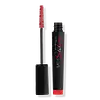What's inside
What's inside
 Key Ingredients
Key Ingredients

 Benefits
Benefits

 Concerns
Concerns

 Ingredients Side-by-side
Ingredients Side-by-side

Water
Skin ConditioningSynthetic Beeswax
Emulsion StabilisingParaffin
PerfumingGlyceryl Stearate
EmollientAcacia Senegal Gum
MaskingButylene Glycol
HumectantOryza Sativa Bran Wax
Skin ConditioningStearic Acid
CleansingPalmitic Acid
EmollientPolybutene
Vp/Eicosene Copolymer
Copernicia Cerifera Wax
Aminomethyl Propanol
BufferingGlycerin
HumectantPvp
Emulsion StabilisingEthylhexylglycerin
Skin ConditioningHydroxyethylcellulose
Emulsion StabilisingDisodium EDTA
Polyester-11
Skin ConditioningCellulose
AbsorbentTrimethylpentanediol/Adipic Acid/Glycerin Crosspolymer
Skin ConditioningPropylene Glycol
HumectantDisodium Phosphate
BufferingPolysorbate 60
EmulsifyingAcacia Seyal Gum Extract
HumectantSodium Phosphate
BufferingAcetyl Hexapeptide-1
Skin ConditioningDextran
Phenoxyethanol
PreservativePotassium Sorbate
PreservativeCI 77499
Cosmetic ColorantCI 77007
Cosmetic ColorantCI 77266
Cosmetic ColorantWater, Synthetic Beeswax, Paraffin, Glyceryl Stearate, Acacia Senegal Gum, Butylene Glycol, Oryza Sativa Bran Wax, Stearic Acid, Palmitic Acid, Polybutene, Vp/Eicosene Copolymer, Copernicia Cerifera Wax, Aminomethyl Propanol, Glycerin, Pvp, Ethylhexylglycerin, Hydroxyethylcellulose, Disodium EDTA, Polyester-11, Cellulose, Trimethylpentanediol/Adipic Acid/Glycerin Crosspolymer, Propylene Glycol, Disodium Phosphate, Polysorbate 60, Acacia Seyal Gum Extract, Sodium Phosphate, Acetyl Hexapeptide-1, Dextran, Phenoxyethanol, Potassium Sorbate, CI 77499, CI 77007, CI 77266
Water
Skin ConditioningParaffin
PerfumingPotassium Cetyl Phosphate
EmulsifyingCera Alba
EmollientCopernicia Cerifera Cera
EmollientAcacia Senegal Gum
MaskingAcrylates Copolymer
Glycerin
HumectantCetyl Alcohol
EmollientHydroxyethylcellulose
Emulsion StabilisingPEG/PPG-17/18 Dimethicone
EmulsifyingSteareth-20
CleansingPhenethyl Alcohol
MaskingPhenoxyethanol
PreservativeHydrolyzed Corn Starch
HumectantSodium Polymethacrylate
Emulsion StabilisingHydrogenated Jojoba Oil
AbrasiveHydrogenated Palm Oil
EmollientSimethicone
EmollientRayon
Disodium EDTA
Silica
AbrasivePanthenol
Skin ConditioningHydrolyzed Silk
HumectantCI 77499
Cosmetic ColorantCI 77492
Cosmetic ColorantCI 77491
Cosmetic ColorantCI 77891
Cosmetic ColorantMica
Cosmetic ColorantCI 75470
Cosmetic ColorantCI 77288
Cosmetic ColorantCI 77289
Cosmetic ColorantCI 77742
Cosmetic ColorantCI 77007
Cosmetic ColorantCI 77510
Cosmetic ColorantWater, Paraffin, Potassium Cetyl Phosphate, Cera Alba, Copernicia Cerifera Cera, Acacia Senegal Gum, Acrylates Copolymer, Glycerin, Cetyl Alcohol, Hydroxyethylcellulose, PEG/PPG-17/18 Dimethicone, Steareth-20, Phenethyl Alcohol, Phenoxyethanol, Hydrolyzed Corn Starch, Sodium Polymethacrylate, Hydrogenated Jojoba Oil, Hydrogenated Palm Oil, Simethicone, Rayon, Disodium EDTA, Silica, Panthenol, Hydrolyzed Silk, CI 77499, CI 77492, CI 77491, CI 77891, Mica, CI 75470, CI 77288, CI 77289, CI 77742, CI 77007, CI 77510
 Reviews
Reviews

Ingredients Explained
These ingredients are found in both products.
Ingredients higher up in an ingredient list are typically present in a larger amount.
Acacia Senegal Gum has skin soothing, thickening, and formulation stabilizing properties. It comes from the Acacia tree that is native to sub-Saharan Africa.
This pigment is called Ultramarine blue lazurite. It gives a saturated blue color, but can be used to create other colors as well.
According to the manufacturer, it is usually made from kaolin, sodium sulfate, sodium carbonate, sulfur, and charcoal.
Ci 77499 is also hydrated iron III oxide. It is created from mixing red and black iron oxides. This helps give shades of darkness to a product.
Iron III oxides are classified as inorganic chemicals for coloring.
Disodium EDTA plays a role in making products more stable by aiding other preservatives.
It is a chelating agent, meaning it neutralizes metal ions that may be found in a product.
Disodium EDTA is a salt of edetic acid and is found to be safe in cosmetic ingredients.
Learn more about Disodium EDTAGlycerin is already naturally found in your skin. It helps moisturize and protect your skin.
A study from 2016 found glycerin to be more effective as a humectant than AHAs and hyaluronic acid.
As a humectant, it helps the skin stay hydrated by pulling moisture to your skin. The low molecular weight of glycerin allows it to pull moisture into the deeper layers of your skin.
Hydrated skin improves your skin barrier; Your skin barrier helps protect against irritants and bacteria.
Glycerin has also been found to have antimicrobial and antiviral properties. Due to these properties, glycerin is often used in wound and burn treatments.
In cosmetics, glycerin is usually derived from plants such as soybean or palm. However, it can also be sourced from animals, such as tallow or animal fat.
This ingredient is organic, colorless, odorless, and non-toxic.
Glycerin is the name for this ingredient in American English. British English uses Glycerol/Glycerine.
Learn more about GlycerinHydroxyethylcellulose is used to improve the texture of products. It is created from a chemical reaction involving ethylene oxide and alkali-cellulose. Cellulose is a sugar found in plant cell walls and help give plants structure.
This ingredient helps stabilize products by preventing ingredients from separating. It can also help thicken the texture of a product.
This ingredient can also be found in pill medicines to help our bodies digest other ingredients.
Learn more about HydroxyethylcelluloseParaffin is a solid created from petroleum. The term 'paraffin' can also refer to either
petroleum jelly or mineral oil.
It has natural occlusive properties which can worsen oily skin. Due to its petrolatum base, this ingredient is not fungal-acne safe.
Phenoxyethanol is a preservative that has germicide, antimicrobial, and aromatic properties. Studies show that phenoxyethanol can prevent microbial growth. By itself, it has a scent that is similar to that of a rose.
It's often used in formulations along with Caprylyl Glycol to preserve the shelf life of products.
Water. It's the most common cosmetic ingredient of all. You'll usually see it at the top of ingredient lists, meaning that it makes up the largest part of the product.
So why is it so popular? Water most often acts as a solvent - this means that it helps dissolve other ingredients into the formulation.
You'll also recognize water as that liquid we all need to stay alive. If you see this, drink a glass of water. Stay hydrated!
Learn more about Water